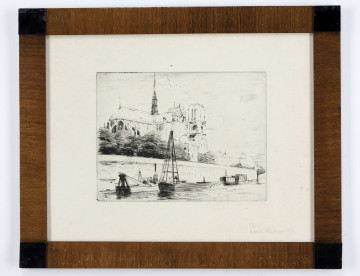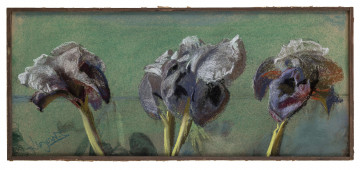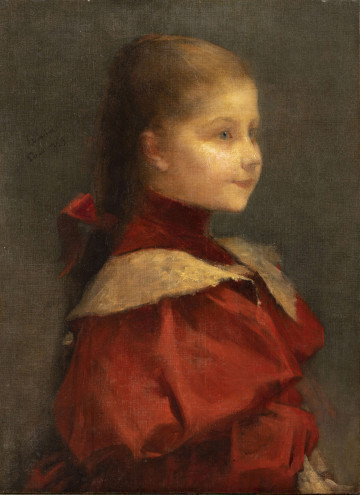
Notre Dame Cathedral in Paris
1903
National Museum in Lublin
Part of the collection: Polish landscape painting (19th–1st half of the 20th c.)
Józef Pankiewicz is one of the artists who, at the turn of the 19th and 20th centuries, led to the autonomy of graphic as an independent form of artistic expression and to its detachment from illustrative and reproductive functions. The artist created about one hundred graphics, dominated by landscape reminiscences from journeys and views of visited cities. Pankiewicz usually used etching and the dry needle techniques, which best expressed his artistic sensitivity. The apparent limitation of graphic, resulting from the narrowing of the colour scale to black and white, was not an obstacle for him. Thanks to his experience as a painter he was able to translate his impressionistic experiences into a matrix in an equally perfect manner as he searched for purely graphic means of expression. Views from his journeys can be compared to the pages of a sketchbook, in which the artist hastily recorded the places he visited in shots from nature, often transferring them directly to the plate. The print in question was published in the Quatorze eaux-forte portfolio, issued in Paris around 1906. It contains fourteen graphic boards on which Pankiewicz depicted, apart from a Polish birch tree, eleven cityscapes from France and two from Italy. The title of board II “Paris - Pont Notre Dame”, included in the list of works, is incorrect - the print depicts St. Michel Bridge in Paris, which has been rendered in a mirror image and confirms Pankiewicz's method of drawing outdoors - directly on the plate covered with varnish. The artist concentrated mostly on the details of the foreground - barges moored in the port of des Grands Augustins and the silhouettes of men sitting at the quay. The Notre Dame Cathedral in the background dominates over the city buildings. The prints from the Quatorze eaux-forte portfolio are among the last graphic works in the oeuvre of Pankiewicz, who in 1906 joined the Academy of Fine Arts in Krakow and took over the chair of painting. Around 1909 the artist's failing eyesight forced him to give up graphic arts altogether.
Anna Hałata
Author / creator
Dimensions
cały obiekt: height: 17,7 cm, width: 11 cm
Object type
graphics
Technique
drypoint
Material
laid paper
Creation time / dating
Creation / finding place
Owner
The National Museum in Lublin
Identification number
Location / status

1903
National Museum in Lublin

XIX/XX century
National Museum in Lublin

1893
National Museum in Lublin
DISCOVER this TOPIC
National Museum in Szczecin
DISCOVER this PATH
Educational path